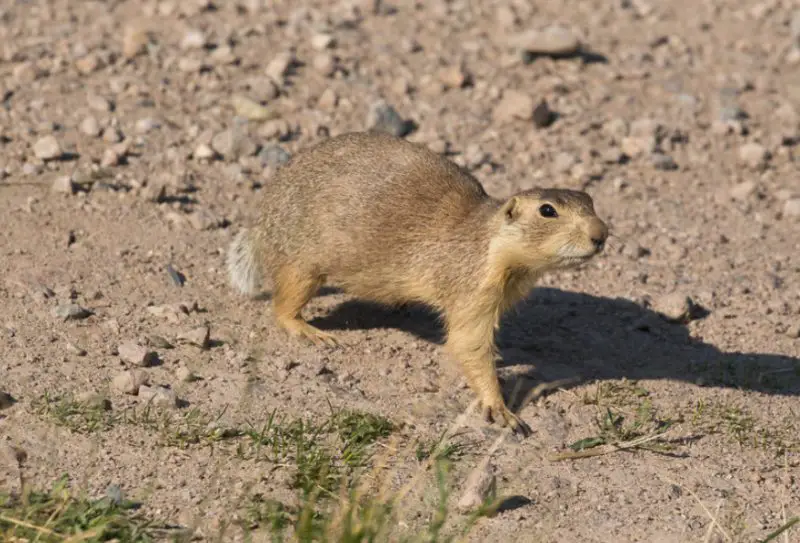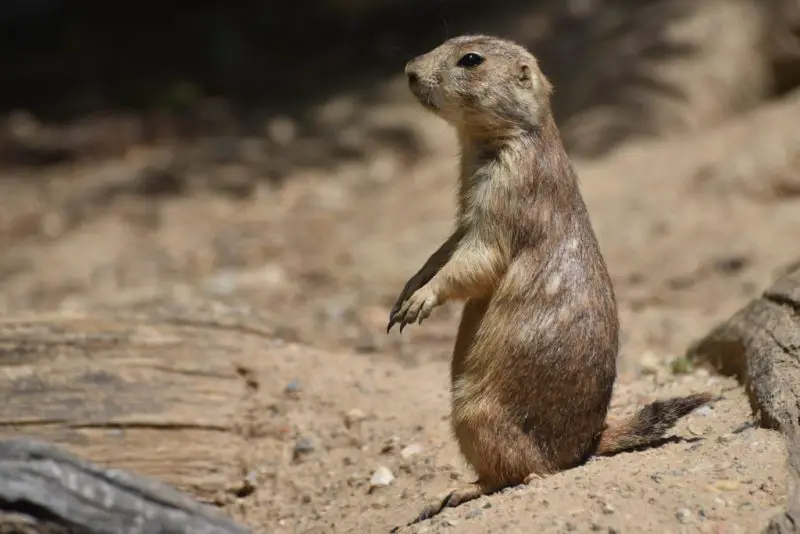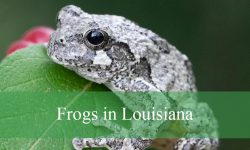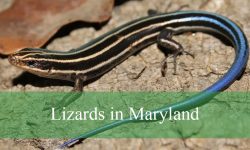Arizona’s landscapes are home to an impressive diversity of wildlife, and among them, prairie dogs hold a special place. These small, social rodents are often overlooked, yet they play a vital ecological role as ecosystem engineers. In Arizona, prairie dogs are not only part of the natural history but also serve as an indicator of healthy grassland ecosystems. Their burrowing, foraging, and social behaviors influence the plants, soils, and other animals that share their environment.
Despite their importance, prairie dogs in Arizona have faced numerous challenges, from habitat loss to human conflict. Today, conservation efforts have helped some populations recover, but their story is far from simple. Understanding their species, habitats, and the best places to see them provides insight into how these animals thrive in Arizona’s unique environment.
This article explores the prairie dog species found in Arizona, their preferred habitats, the challenges they face, and where wildlife enthusiasts can observe them in the wild. By the end, you will have a comprehensive understanding of prairie dogs in Arizona and their significance in the ecosystem.
Species of Prairie Dogs in Arizona
Gunnison’s Prairie Dog

The most prominent prairie dog species in Arizona is the Gunnison’s prairie dog. This species is found primarily in the northern and eastern regions of the state, thriving in high desert plateaus and grasslands. Unlike the more widespread black-tailed prairie dog of the Great Plains, Gunnison’s prairie dogs are adapted to the arid landscapes of the Southwest. Their fur often has a mottled grayish or brownish tone that helps them blend into their surroundings.
Gunnison’s prairie dogs are known for their extensive underground colonies, often called “towns.” These burrow systems provide protection from predators and extreme temperatures. Each colony consists of multiple family units that communicate through a complex system of vocalizations. Their high-pitched calls serve as alarms when predators such as hawks, coyotes, or snakes approach.
This species is also notable for its seasonal behavior. During the winter months, Gunnison’s prairie dogs reduce activity significantly, sometimes entering periods of torpor. This adaptation allows them to survive the harsh winters of northern Arizona, where snow and freezing temperatures are common.
Although once widespread, Gunnison’s prairie dog populations have declined due to habitat fragmentation, plague outbreaks, and human eradication programs. However, conservation efforts in Arizona have focused on preserving grassland ecosystems and reducing threats to their survival.
Black-Tailed Prairie Dog

The black-tailed prairie dog is less common in Arizona today, but historically it occupied the southeastern portion of the state. This species differs from the Gunnison’s by its distinctive black-tipped tail and slightly larger size. Black-tailed prairie dogs are highly social animals and often live in larger colonies than Gunnison’s. Their burrow systems can extend for acres, creating bustling underground networks.
Black-tailed prairie dogs are diurnal, meaning they are most active during the day. They spend much of their time foraging on grasses, roots, and seeds, which makes them important contributors to grassland management. Their grazing habits can stimulate plant growth and maintain open spaces that benefit other species.
In Arizona, black-tailed prairie dogs faced near extinction due to widespread eradication campaigns in the 20th century. Ranchers viewed them as competitors for forage, and many colonies were destroyed. Today, small reintroduced populations exist in specific areas as part of recovery programs. Seeing black-tailed prairie dogs in Arizona is less common than observing Gunnison’s, but they remain a fascinating part of the state’s wildlife heritage.
Habitats of Prairie Dogs in Arizona
Grasslands and Open Plains
Prairie dogs thrive in open grasslands where visibility is high, and vegetation is low to moderate. In Arizona, these habitats are often found in the high desert regions and plateaus. The short grasses of these ecosystems provide food while also allowing prairie dogs to spot predators from a distance. Their burrows are usually located in areas with well-drained soils that are easy to dig yet stable enough to prevent collapse.
The presence of prairie dogs in these habitats is crucial because their activities enhance biodiversity. By grazing on grasses, they prevent shrub encroachment and maintain the open character of the plains. Their burrows also serve as homes for other species, including burrowing owls, snakes, and insects. This interconnected relationship highlights why prairie dogs are often called keystone species.
Shrublands and Desert Margins
In addition to grasslands, prairie dogs in Arizona sometimes inhabit shrubland areas, especially where grasses intermingle with desert scrub. These transitional zones provide a mix of cover and food sources. Gunnison’s prairie dogs are particularly adaptable to such habitats, where they can survive in slightly harsher conditions compared to their Great Plains relatives.
These desert margins are often more challenging environments, with less predictable rainfall and sparser vegetation. Prairie dogs in these areas rely heavily on underground burrows to protect them from extreme heat during summer and cold during winter. They also adapt their foraging strategies to include available vegetation, such as seeds and cactus parts, when grasses are scarce.
Elevation and Climate Factors
Elevation plays a major role in the distribution of prairie dogs in Arizona. Gunnison’s prairie dogs, for example, are most commonly found between 4,000 and 8,000 feet in elevation. These higher elevations provide cooler temperatures and more reliable precipitation compared to low desert valleys. In these zones, grasslands and meadows offer ideal conditions for colonies to thrive.
Climate conditions also influence prairie dog populations. Areas with consistent drought pose significant challenges, as reduced vegetation limits food availability. Additionally, harsh winters can affect survival rates. Despite these challenges, prairie dogs demonstrate remarkable resilience, adjusting their social structures and behaviors to persist in Arizona’s variable climates.
Ecological Importance of Prairie Dogs
Keystone Species Role
Prairie dogs are considered keystone species because their presence benefits a wide range of other animals and plants. Their burrowing activities aerate the soil, allowing water and nutrients to penetrate deeper. This process improves soil quality and supports healthy plant communities. Without prairie dogs, many grassland ecosystems in Arizona would degrade, losing both plant and animal diversity.
Their colonies provide essential habitats for other wildlife. Burrowing owls often nest in abandoned prairie dog tunnels, while snakes and insects use the underground networks for shelter. Larger predators, such as hawks and coyotes, also rely on prairie dog populations as a food source. This interconnected web underscores the prairie dog’s role as a foundation species in Arizona’s grasslands.
Impact on Vegetation and Landscape
Through constant grazing, prairie dogs influence plant composition and distribution. They prefer certain grasses and forbs, which creates patchy patterns in vegetation. These patches not only provide forage for other animals but also create microhabitats for insects and ground-nesting birds. Their presence prevents rangelands from becoming overrun with shrubs, which could otherwise alter the entire landscape.
Over time, the physical impact of their burrows also shapes the land. Soil mounds and disturbed areas created by digging can change water flow and erosion patterns. While some see these effects as negative, ecologists recognize them as natural processes that enhance landscape heterogeneity and support diverse life forms.
Conservation Challenges
Habitat Loss and Fragmentation
One of the biggest threats to prairie dogs in Arizona is habitat loss. Expanding agriculture, urban development, and road construction have fragmented once continuous grasslands. This isolation of colonies reduces genetic diversity and increases vulnerability to disease outbreaks. Small, scattered populations are less likely to recover from declines, making conservation efforts more difficult.
Human-Wildlife Conflict
Historically, ranchers and landowners viewed prairie dogs as pests that competed with livestock for forage. This perception led to widespread eradication efforts, including poisoning and shooting. While attitudes have shifted somewhat, conflicts still arise in areas where cattle grazing overlaps with prairie dog colonies. Balancing the needs of ranchers with the ecological importance of prairie dogs remains a delicate challenge in Arizona.
Disease and Environmental Stress
Sylvatic plague, a disease carried by fleas, poses a significant threat to prairie dog populations. Outbreaks can wipe out entire colonies within weeks, devastating local ecosystems that depend on their presence. In Arizona, plague management has become a central part of prairie dog conservation. Measures include flea control and vaccination programs for colonies.
In addition to disease, climate change brings environmental stressors such as prolonged droughts and extreme weather events. These factors further strain prairie dog populations by reducing food availability and altering habitat conditions.
Where to See Prairie Dogs in Arizona
Northern Arizona Grasslands
Northern Arizona offers some of the best opportunities to see Gunnison’s prairie dogs. Areas around Flagstaff, the San Francisco Peaks, and the Coconino Plateau host healthy colonies. These regions provide the high-elevation grasslands that Gunnison’s prairie dogs prefer, with open views that make spotting them easier. Visitors often see them near roadways, open fields, and conservation areas.
Eastern Arizona Plateaus
The plateaus of eastern Arizona, near the New Mexico border, are also strongholds for prairie dog populations. In these regions, large colonies can still be found, especially in areas protected by conservation organizations. The grasslands here are expansive, providing ample room for prairie dog towns to thrive. These areas are particularly rewarding for wildlife watchers seeking to observe natural prairie dog behaviors.
Wildlife Refuges and Protected Areas
Several protected areas in Arizona provide excellent opportunities to observe prairie dogs in their natural habitats. Places such as Petrified Forest National Park and nearby grassland preserves support populations of Gunnison’s prairie dogs. These locations not only offer wildlife viewing but also highlight ongoing conservation efforts aimed at preserving grassland ecosystems. Visitors can enjoy educational programs and guided tours that emphasize the ecological importance of prairie dogs.
Conclusion
Prairie dogs in Arizona represent both the challenges and triumphs of wildlife conservation. From the resilient Gunnison’s prairie dog thriving in northern plateaus to the rare black-tailed prairie dog surviving through reintroduction, these animals continue to shape the state’s ecosystems. Their burrowing and foraging activities sustain grasslands, benefiting countless other species.
Yet, prairie dogs also face ongoing threats, from habitat loss and disease to human conflict. Conservation efforts remain essential to ensuring their survival and maintaining the ecological balance they help create. For wildlife enthusiasts and nature lovers, Arizona provides opportunities to witness these remarkable animals in action. Observing prairie dogs in their natural environment not only connects us to the wild landscapes of the Southwest but also underscores the importance of protecting biodiversity for generations to come.
FAQs About Prairie Dogs in Arizona
What species of prairie dogs live in Arizona?
Arizona is home to two species of prairie dogs: Gunnison’s prairie dog and the black-tailed prairie dog. Gunnison’s is the most common, while the black-tailed exists in smaller, reintroduced populations in the southeastern part of the state.
Where are the best places to see prairie dogs in Arizona?
The best places to see prairie dogs include northern Arizona grasslands near Flagstaff, the San Francisco Peaks, and eastern plateaus along the New Mexico border. Protected areas like Petrified Forest National Park also offer good viewing opportunities.
Why are prairie dogs important to Arizona’s ecosystem?
Prairie dogs are considered keystone species because their burrowing, grazing, and social activities create habitats for many other animals. Their presence supports biodiversity, soil health, and grassland sustainability across Arizona.
Do prairie dogs hibernate in Arizona?
Gunnison’s prairie dogs in northern Arizona enter periods of torpor during the coldest months, reducing activity significantly. However, they do not fully hibernate like some mammals and may emerge during milder winter days.
What threats do prairie dogs face in Arizona?
The main threats to prairie dogs in Arizona are habitat loss, human-wildlife conflict, sylvatic plague, and environmental stress caused by drought and climate change. Conservation programs aim to protect their colonies and preserve grassland ecosystems.






